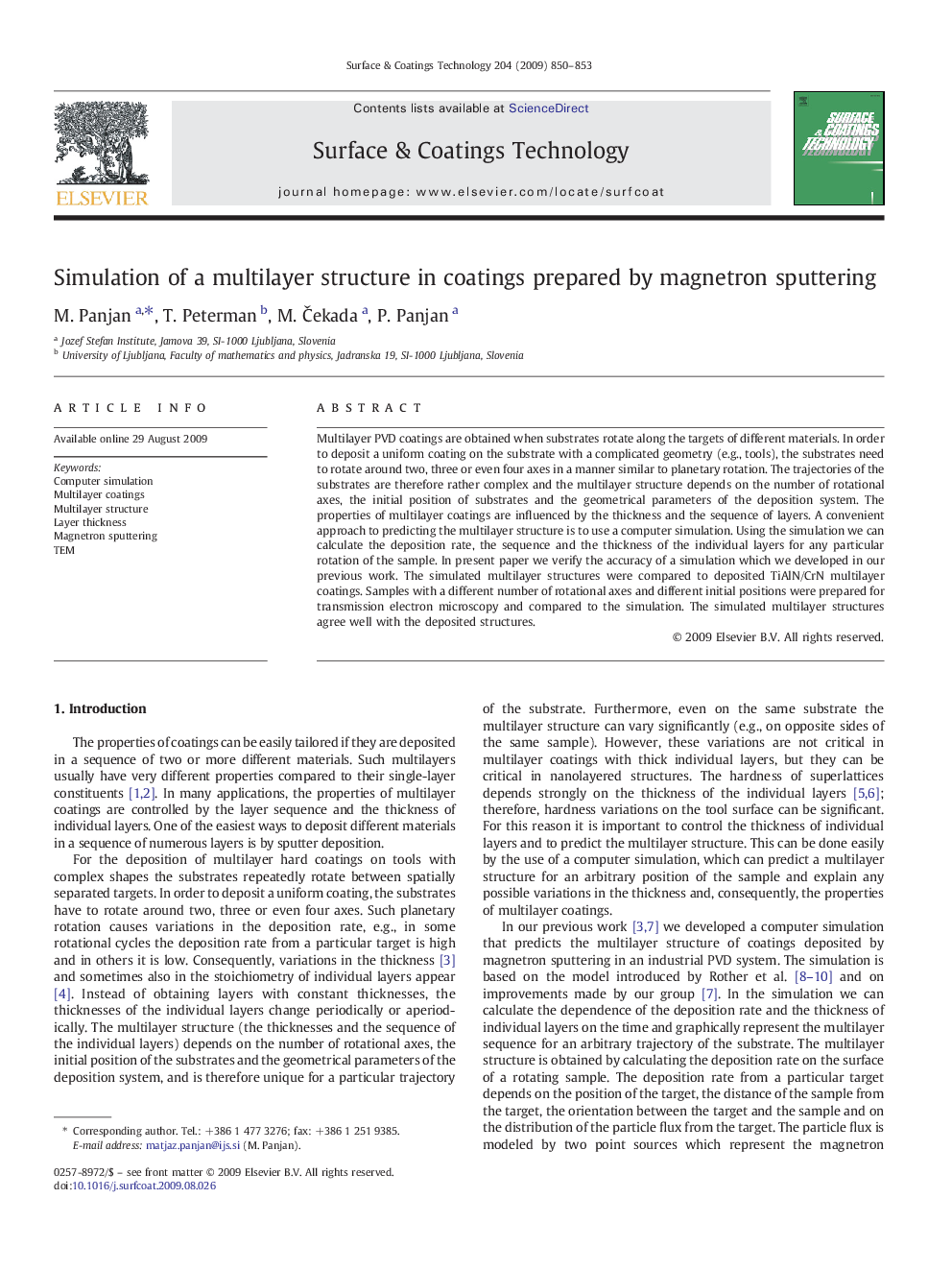| Article ID | Journal | Published Year | Pages | File Type |
|---|---|---|---|---|
| 1660333 | Surface and Coatings Technology | 2009 | 4 Pages |
Multilayer PVD coatings are obtained when substrates rotate along the targets of different materials. In order to deposit a uniform coating on the substrate with a complicated geometry (e.g., tools), the substrates need to rotate around two, three or even four axes in a manner similar to planetary rotation. The trajectories of the substrates are therefore rather complex and the multilayer structure depends on the number of rotational axes, the initial position of substrates and the geometrical parameters of the deposition system. The properties of multilayer coatings are influenced by the thickness and the sequence of layers. A convenient approach to predicting the multilayer structure is to use a computer simulation. Using the simulation we can calculate the deposition rate, the sequence and the thickness of the individual layers for any particular rotation of the sample. In present paper we verify the accuracy of a simulation which we developed in our previous work. The simulated multilayer structures were compared to deposited TiAlN/CrN multilayer coatings. Samples with a different number of rotational axes and different initial positions were prepared for transmission electron microscopy and compared to the simulation. The simulated multilayer structures agree well with the deposited structures.
